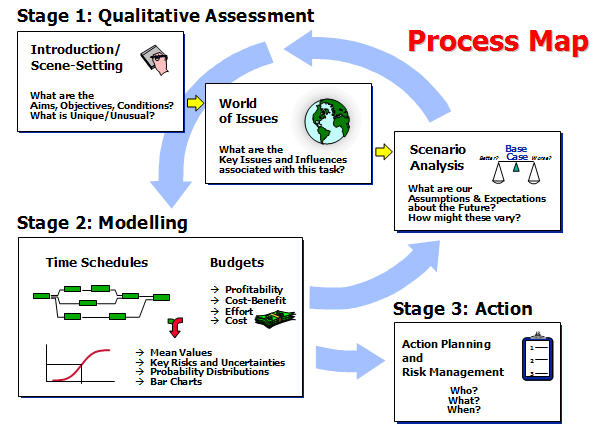|
|
 |
|
|
 |
Analysis in Three Steps
The Method involves an Analysis Group in a creative, multi disciplinary process in which qualitative and quantitative
data about the future are captured and modelled. All issues are included – 'soft' factors as well as 'hard'
technical ones. The approach involves distinct qualitative, quantitative and risk management
stages: - Qualitative Assessment - brainstorming to identify issues, followed by grouping and structuring
these into a number of topic areas. A 'Scenario Analysis' is then carried out to identify the key Base Case
assumptions and how they could vary for better or for worse (i.e., risks and opportunities)
- Modelling
- quantitative models are developed from a top-down perspective. Uncertainty for each variable is expressed as triple estimates
(min, most likely, max). The process begins with a small number of activities or items which together cover the scope
of the task. More are then added in order to break down the most uncertain aspects into more detail (this is known as
the Successive Principle). This means that the best possible result can be achieved
in the minimum possible time.
Two types of quantitative risk
model can be developed - time schedule analyses and cost-type analyses. The calculation approach is simpler and more
pragmatic than many others, with less emphasis on complex modelling and more emphasis on common sense and practical thinking.
Many users see this as one of the most important benefits of the methodology.
- Risk Management - involves the development
of action plans to respond to the key findings. Emphasis is always applied to the
priority issues.

|
 |
|
|
 |
|
|
 |
|
|
|
|
|
|
 |

